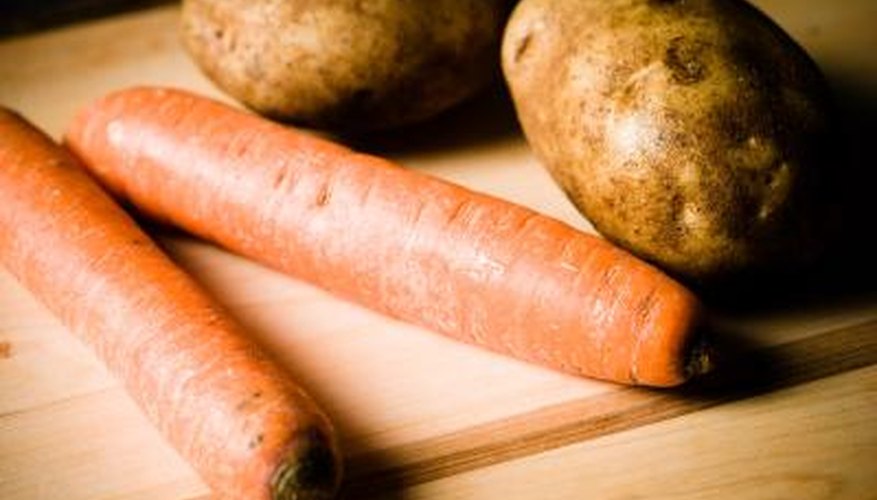While all tubers are root crops, not all root crops are tubers. Tubers share some traits with root crops, but they differ physiologically. Nutritionists and governments consider both groups vegetables and important components of a balanced diet. Root crops and tubers provide carbohydrates, vitamins, minerals and micronutrients.
Similarites between Root Crops and Tubers

Roots perform two primary functions. They absorb minerals and water from the soil to sustain plant growth. They also anchor the plant in place by providing a structural foundation. Root crops and tubers accomplish both these functions.
- Roots perform two primary functions.
- They absorb minerals and water from the soil to sustain plant growth.
Differences Between Tubers and Root Crops

Tubers differ from root crops in three ways. Tubers are enlarged stems rather than enlarged roots. Cut up a tuber, and each section will grow a plant; root crops cannot do this. Tubers contain more starch than root crops.
- Tubers differ from root crops in three ways.
- Tubers contain more starch than root crops.
Physiological Differences
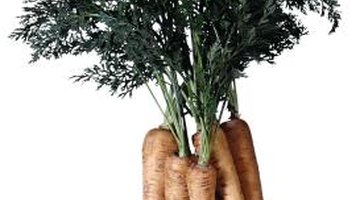
Tubers and root crops form from different types of plant tissues. Even though a tuber grows underground, it is a type of specialised stem tissue that stores nutrients for the plant. A potato is actually an enlarged stem. Root crops derive from root tissue. Carrots are an enlarged tap root.
- Tubers and root crops form from different types of plant tissues.
Root Structure

Root crops and tubers have a different kind of root structure. Root crops are tap roots. They are a single root that bores down into the soil like a carrot or parsnip. They can be a single rounded modified root like a beet. The key point being, root crops form one vegetable per stem. With tubers, a single plant can produce several tubers. A carrot plant will have one carrot, while a potato plant can produce several potatoes.
- Root crops and tubers have a different kind of root structure.
Carbohydrate Composition
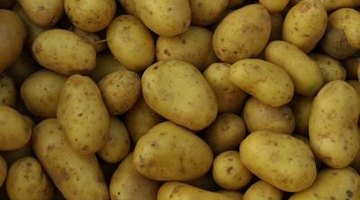
Root crops and tubers vary in their carbohydrate composition. Root crops contain more simple carbohydrates such as glucose. Tubers contain long chains of glucose called starch. Potatoes are an important food crop around the world because they contain large amounts of starch, a good source of energy for people's metabolisms.
- Root crops and tubers vary in their carbohydrate composition.
- Root crops contain more simple carbohydrates such as glucose.
Propagation
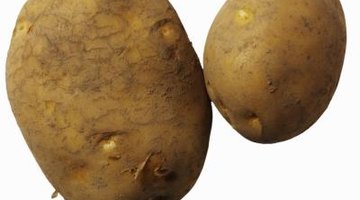
Plants store the energy in tubers for propagation. A cut up radish provides a snack; a cut up potato can grow more plants. Many ornamental plants can be propagated by cutting a portion of stem and sticking it in water. The stem will eventually grow roots. Potatoes are the same way. Slice a potato into several sections containing an eye. A new plant will grow from each section. Root crops cannot do this.
- Plants store the energy in tubers for propagation.
- A cut up radish provides a snack; a cut up potato can grow more plants.
Nutrition
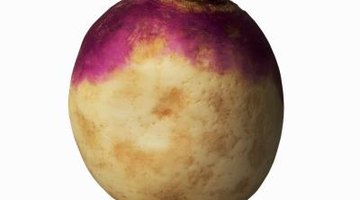
Both root crops and tubers offer abundant nutrition. Tubers offer loads of energy and vitamins. Root crops offer vitamins, minerals and micronutrients. Carrots contain beta-carotene, a precursor to vitamin A which, according to the Mayo Clinic, is good for the eyes. The Center for Disease Control and Prevention lists the tubers yucca and jicama, as well as root crops horseradish and rutabaga, as high in vitamin C.
- Both root crops and tubers offer abundant nutrition.
- Tubers offer loads of energy and vitamins.
